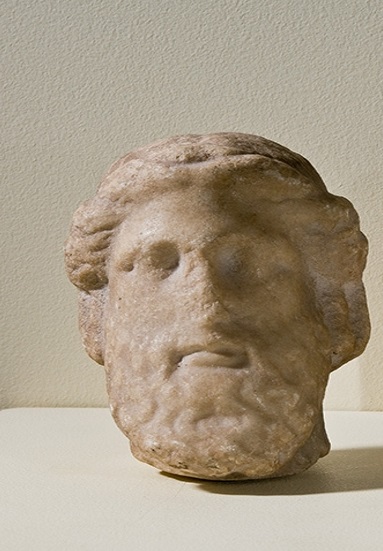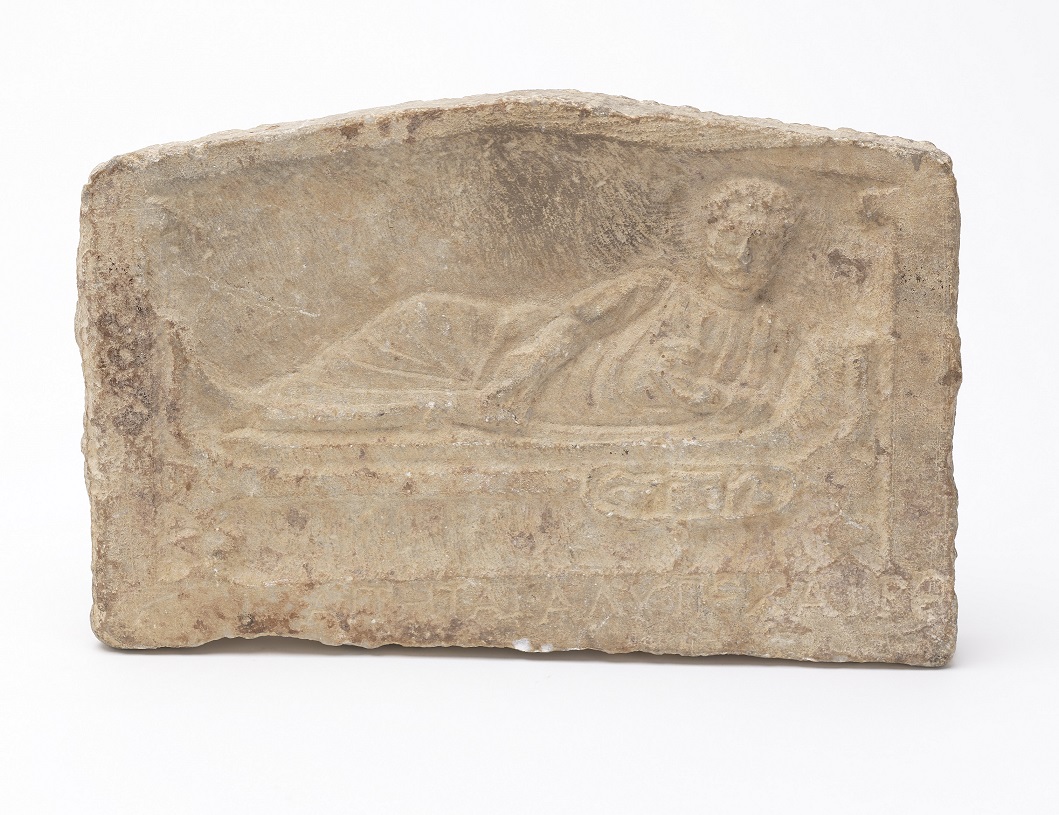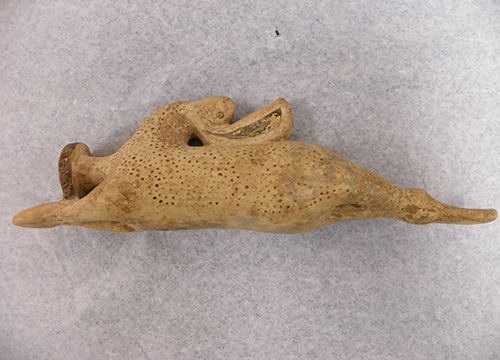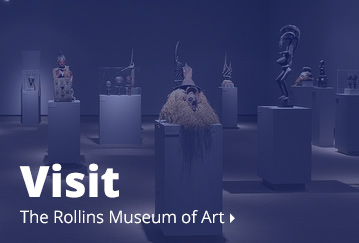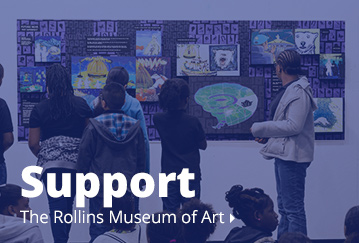Antiquities
Several gifts to Rollins College, the earliest from the 1930s – the same decade when the first gifts of European Old Masters were received – have formed a small collection of antiquities. They include Egyptian bronze vessels and stone and ceramic carvings; cuneiform tablets; Etruscan ceramics; Roman fragmentary statues and sculpted funerary stele. This part of the collection is actively used by Rollins classical art, archeology and anthropology professors; as we continue to research it, more objects will be added to the website.
PLEASE NOTE: Not all works in the Rollins Museum collection are on view at any given time. View our Exhibitions page to see what's on view now. If you have questions about a specific work, please call 407-646-2526 prior to visiting.
| Zoomorphic Alabastron | |
Unknown
(Greek)Head of Zeus, 2nd-3rd Century AD
Marble
6 7/8 x 6 x 4 1/2 in
Gift of Elena Powers. 1933.9
Unknown Burial Stele with Banqueting Scene
Untitled, 2nd - 3rd Century AD
Limestone
6 5/8 x 10 1/4 x 1 1/4 in.
Gift of Ella Powers, 1933.8
This stele belongs to a class of relief burial markers common in the Eastern provinces of the Roman Empire. It contains an image of a deceased banqueter reclining on a funerary couch, a popular motif from steles employed at Antioch on the Orontes.
The scene on the stele consists of a diner, usually interpreted as the deceased, showing his social superiority through reclining his left elbow on a banqueting couch (kline). In his right hand he holds what may be either a phiale (vessel for pouring ritual offerings) or a pomegranate. In either case, the object hints at the ritual significance of this particular feast and suggests that the image is that of the deceased at a funeral banquet, or its continuation in the afterlife. The scene occurs within an architectural setting that acts as a frame for the image. Two pillars that terminate at their upper edge define the boundaries.
Unknown
Zoomorphic Alabastron in the Shape of a Rabbit, 600-550 BC
Ceramic
2 13/64 x 7 9/16 x 1 17/32 in.
Gift f Dennis R. Knapp, 1983.30
This alabastron in the shape of a rabbit is a container for luxury products. The vessel takes the shape of a rabbit with rear legs and fore-paws extended. This type of alabastron was a popular variant on the standard vessel form for perfume containers characteristic of the early 6th century BC. As a result of its zoomorphic form, which rendered it impossible for the vessel to stand erect in a self-supporting fashion, the potter left a small gap between the extended fore-paws of the rabbit and the broad splaying rim of the alabastron so that the container could be worn around the neck, or suspended from a hook. The vessel would have been most likely used by an aristocrat preparing for a special event or ceremony. In this context, the shape of a rabbit carries additional significance. Rabbits are often seen in the rituals associated with festivals of Dionysus, the god of wine, revelry, and theater.
